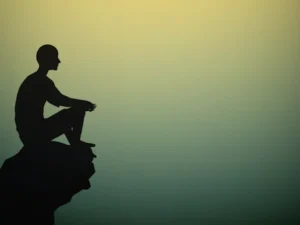Almost 20 years ago, after the fall of the Taliban, I wrote an article for El Mundo (Spain) in which I argued that the only solution for Afghanistan was to restore the monarchy represented by King Mohammed Zahir Shah (15 October 1914-23 July 2007). I argued that in a nation that had never had a democracy and whose power structures were based on tribalism, Western-style democracy was not the solution. For the tribal chiefs, the king was the only one who could unite them. He was the only person they all respected.
The king (padishah) was in power for four decades, from 1933 until his overthrow in a coup in 1973. A cautious policy of nation-building marked the first 20 years of his reign. Foreign relations expanded, and domestic development funded entirely from Afghan resources. The Second World War slowed down development. But Afghanistan maintained its traditional neutrality. My father and grandmother knew him well. He was a regular visitor to their home on the French Riviera in the late 1930s.

Shah Mahmud, prime minister from 1946 to 1953, sanctioned free elections and a relatively free press. A so-called “liberal parliament” functioned from 1949 to 1952. However, conservatives in the government, encouraged by religious leaders, supported the 1953 seizure of power by Lieutenant General Mohammad Daud Khan, a brother-in-law and first cousin of the king, who would later overthrow the monarchy in 1973 and install a corrupt and disastrous republic that marked the beginning of the end of Afghan welfare.
Prime Minister Daud Khan (1953-63) surprised many by turning to the Soviet Union for economic and military aid. The Soviets ended up becoming Afghanistan’s most important trading and aiding partner. The Afghans refused to take sides in the Cold War. Afghanistan became an “economic Korea”, testing the West’s (especially the US’s) willingness and ability to compete with the Soviet bloc in a non-aligned country. Daud Khan successfully introduced several far-reaching educational and social reforms, such as allowing women to wear the veil voluntarily and abolishing purdah (the practice of keeping women out of public view), which theoretically increased the labour force by about half. But the regime remained politically repressive. It did not tolerate direct opposition.

Daud Khan was overthrown by Pakistan. Pakistan closed the border in 1961. Its prolonged closure meant that Afghanistan became increasingly dependent on the Soviet Union for trade and transit facilities. In an attempt to reverse the trend, Daud Khan resigned in March 1963. The border was reopened in May, but he returned in 1973 to take revenge on his king.
An experiment in constitutional monarchy was launched by the king and his advisers. In 1964, a Loya Jirga (grand assembly) adopted a new constitution. It provided for a House of the People with 216 elected members and a House of Elders with 84 members, one-third elected by the people, one-third appointed by the king and one-third indirectly elected by new provincial assemblies. Afghanistan experienced a decade of unprecedented progress and tranquillity.
In 1965 and 1969 elections were held for both houses of the legislature. Several unofficial parties fielded candidates with platforms ranging from fundamentalist Islam to the far left. One such group was the Marxist People’s Democratic Party of Afghanistan (PDPA). It is the country’s main left-wing organisation. Founded in 1965, the party soon split into two factions, known as the People’s Party (Khalq) and the Flag Party (Parcham). Another was a conservative religious organisation known as the Islamic Society (Jamʿiyyat-e Eslāmī). It was founded in 1971 by several religious-minded individuals, including members of the religious faculty at Kabul University. The militant ideology of Egypt’s Muslim Brotherhood heavily influenced the Islamists. They fervently opposed the power of leftist and secular elements in Afghanistan.

Domestic politics became increasingly polarised. This was reflected in the king’s appointment of five successive prime ministers between September 1965 and December 1972. Mohammad Daud Khan sensed a stalemate in the constitutional process. He seized power in a virtually bloodless coup on 17 July 1973. Islamist militants were forced to flee the country and left-wing military officers and Flag Party officials collaborated in the overthrow. Daud Khan abolished the 1964 constitution and established the Republic of Afghanistan. He appointed himself Chairman of the Central Committee of the Republic and Prime Minister. Since then (the Soviet invasion, civil war since Daud Khan’s assassination in 1977, the Taliban regime and the disastrous Western intervention between 2002 and 2021), Afghanistan has been in a state of permanent chaos.
The failure to restore the monarchy was the fault of the US. In April 2002, with the country no longer under Taliban rule, Zahir Shah returned to Afghanistan to inaugurate the Loya Jirga, which met in June 2002. After the fall of the Taliban, Afghans openly called for a return to the monarchy. The king himself stated that he would accept any responsibility that the Loya Jirga had in store for him. However, at the behest of the United States, he was publicly forced to step aside. Many of the Loya Jirga delegates were prepared to vote for Zahir Shah and block the American candidate, Hamid Karzai. The Americans had their way, regardless of the country’s idiosyncrasies, and the king was given the ceremonial title of ‘Father of the Nation’, symbolising his role in Afghanistan’s history as a non-political symbol of national unity. With his death, the title was abolished.
Hamid Karzai, a prominent figure of the Popalzai clan, became president of Afghanistan. Since then, a certain openness was restored, especially in Kabul, but the reality is that the country experienced a covert civil war with the participation of Western troops until their withdrawal and the consequent victory of the Taliban.

The US and its allies took only two months to “liberate” Kabul from the Taliban in 2001. They declared victory. As the US occupation faltered, the deposed Taliban regrouped and a new phase of civil war against US and Afghan government forces began for much of the next two decades. The Taliban regained power after the precipitous withdrawal of Western forces in August 2021. They declared an end to the war.
But successive US administrations deliberately misled the American public into believing that all was well on the Afghan front. In fact, just as they had done during the Vietnam War, the opposite was true. The scene of US personnel fleeing Kabul, as in Saigon in 1975, was frankly shocking.
The US and its allies have suffered a few thousand casualties. But tens of thousands of Afghan security forces were killed, and untold numbers of civilians have become the real victims of a war that has destroyed the lives and livelihoods of countless families and communities. To count the cost of America’s longest war, there is no shortage of metrics. Blood is by far the most precious of these measures. But the vast sums spent by the US to transform Afghanistan into a liberal democracy deserve a thorough audit, as images of Afghans streaming through Kabul’s airport, desperate to escape Taliban rule, flooded screens around the world. Otherwise, the lessons will be forgotten. The tragic mistakes will be repeated.

Nation-building is based on security. If people do not feel secure, instability, bribery, and corruption will flourish. The formal economy will wither. Since 2001, the US has spent $2.26 trillion in Afghanistan. This is according to the Costs of War project at Brown University. Despite this, Afghanistan still has one of the world’s smallest formal economies. In 2020, President Ashraf Ghani said that 90% of the population lived on less than $2 a day.
The Afghan army and the government it is supposed to protect have collapsed, as if this performance were not bad enough for the US. President Ashraf Ghani fled the country and the Taliban are took selfies behind his desk. This is what a chaotic and humiliating end to 20 years of war has produced for the US after an investment of more than $2 trillion.
The total collapse of the Afghan government forces following the withdrawal of the remaining US combat troops has left many in Washington and other Western capitals scratching their heads in search of answers, and voters and the press asking: What the hell did our soldiers die for?
Afghans knew in their hearts that the US and its allies would leave eventually. They knew they would have to deal with the Taliban again. So, in 2002, tribal leaders insisted that the only solution to the long civil war was the return of the king. Since the presidency of Hamid Karzai, successive governments have been rather inept and corrupt. They have lacked the confidence of the people. They have never attempted to stand on their own two feet because of their total dependence on US military and financial aid. The armed forces were the same. Although they outnumbered the Taliban four to one, corruption, nepotism and neglect were rife, especially at the top.

In short, monarchy can be the solution to armed conflict in some nations. Had it been restored, the humiliation of two decades of tragedy could have been avoided. Washington’s lesson for the future must be the avoidance of war at all costs. It should not forget that it has not won one since the Second World War.
China has stepped in to support the Taliban now that the West has left Afghanistan to its own devices. The only glimmer of hope for the country would be that a young charismatic member of the royal family eventually unites the opposition to the Taliban under the symbol of the crown. The Pashtuns, the Hazaras would respect the prince, the Tajiks and the Uzbeks, just as King Zahir Shah was in 2002, when their leaders were lobbying Washington for the restoration of the monarchy.
Afghanistan’s future lies in its glorious past, which was ruled by King Zahir Shah. A past before the Western powers started to interfere in 1973 and created a mess with tragic consequences. As a result, Afghanistan has returned to the darkness of the Middle Ages.











